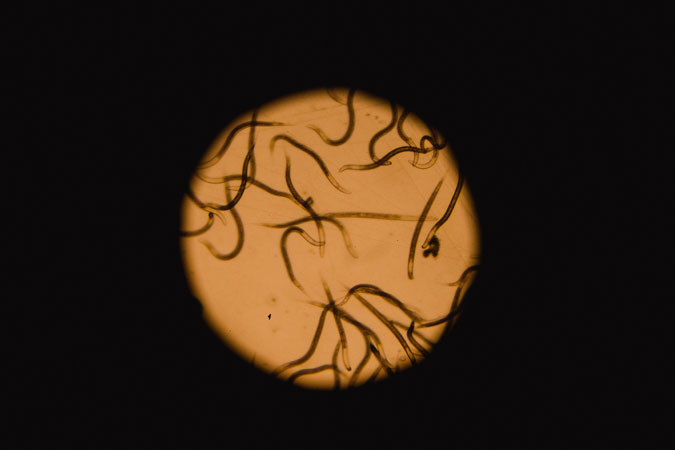COMMUNITY

Nematodes: How Our Pest Management was Inspired by Nature
Posted On: September 11, 2019The experienced team behind our Lab Mar Verde, Camposol’s on-site laboratory, is always looking for natural alternatives to keep our produce thriving and safe from predators and plagues. By implementing integrated pest management, a tactic that uses good bugs to fight off the bad, we diminish the use of pesticides and consequently maintain an enjoyable environment for our employees and local flora and fauna. Despite if being a natural alternative, there’s a lot of work that goes into maintaining a healthy population of beneficial critters.

Olinda del Castillo, Lead Investigator at Lab Mar Verde, recently introduced us to nematodes, a key part of our pest management. Soft bodied and worm-like, good and bad nematodes can appear in the soil of just about any crop. Harmful nematodes are able to feed off of a plant’s root thanks to a small claw; lacking any such physical feature, entomopathogenic nematodes can’t harm sturdy plants and instead go after harmful pests.
Having entered through an orifice of the harmful bug, an entomopathogenic nematode will release a bacteria and ultimately kill the host within 24 to 48 hours. The nematode will then feast on the deceased bug, mature into a female or male species, and reproduce. Though its an efficient plague-fighting tactic created by Mother Nature, the short lifespan of these roundworms inspired our team of microbiologists to become the first in Peru to produce nematodes in vitro.

“Here in our lab, larvae are sustained with an artificial diet so that they can attract hungry nematodes,” says Olinda, as we pass a table in the laboratory displaying the entire process of nematode reproduction. Healthy looking nematodes crawl in an enclosed space shared with deceased larvae that have turned brick red due to the nematodes’ bacteria. Batches of about 400 infested larvae are placed into separate containers along with a dampened cotton swabs to create a humid environment to sustain the newborn nematodes.
Ultimately, the same process of consumption and reproduction occurs in the lab just as it would in the soil, only here the controlled environment allows for increased reproduction. According to Olinda, each larva will host about 100,000 nematodes.

“Once we have the good nematodes we release them into the soil by way of our drip irrigation system and they instantly begin hunting for whatever plague is affecting the roots,” describes Olinda. “A plague can hit at anytime of the plant’s life—whether it’s a blueberry, avocado or mandarin crop—so we apply this once a year, to every hectare of our fields.”





